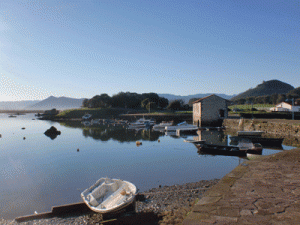Argoños territory is flat, of fertile soil and riverbanks that are characterized by their strong Cantabrian tides, which constantly change the scenery from shallow open waters to swamps and sandy beaches. The twon is 50% cattle breeders and 50% fishermen. The estuary contains a high ecological level and they are protected within the Parque Natural de las Marismas de Santoña territory. The recent development of the municipality is similar to those on the coastal localities of Cantabria, with a noticible increase in tourist and residential services. The farming and fishing industries mantain a succulent gastronomy and, at the same time, thanks to excellent connections, the number of residents is gradually growing in the search of a higher quality of life, enjoying the privilage of peace and quite Argoños.
A bit of History
We find he first written reference on the locality of Argoños in the year 942, in a document mentioning a road related to the Agripa Street. In the XI – XII century, is when great numbers of written documents appear where the small village´s administrative files are collected. According to sources, Argoños was a village of an abbot first and depended on the Santa María del Puerto Monastery of Santoña. After, it went to depend on the Santa María la Real de Nájera Monastery, where servants worked untill the XVI century. Argoños returned to the Royal jurisdiction in the time of Felipe II, when the letter of the brotherhood between the villages of Puerto and Escalante with the Merindad de Trasmiera in 1579 was signed. Argoños follows the same history pattern of Trasmiera and “Siete villas” during the Middle Ages.
By this time, the locality already had a solid tradition of metalurgical, blacksmiths and smelters artists, heirs of medieval forgers coexisting with the agricultural and flour mill occupations.
In the Modern Ages, in 1605, is when the aparition of Nuestra Señora de la Bien Aparecida ocurred in Marrón.





